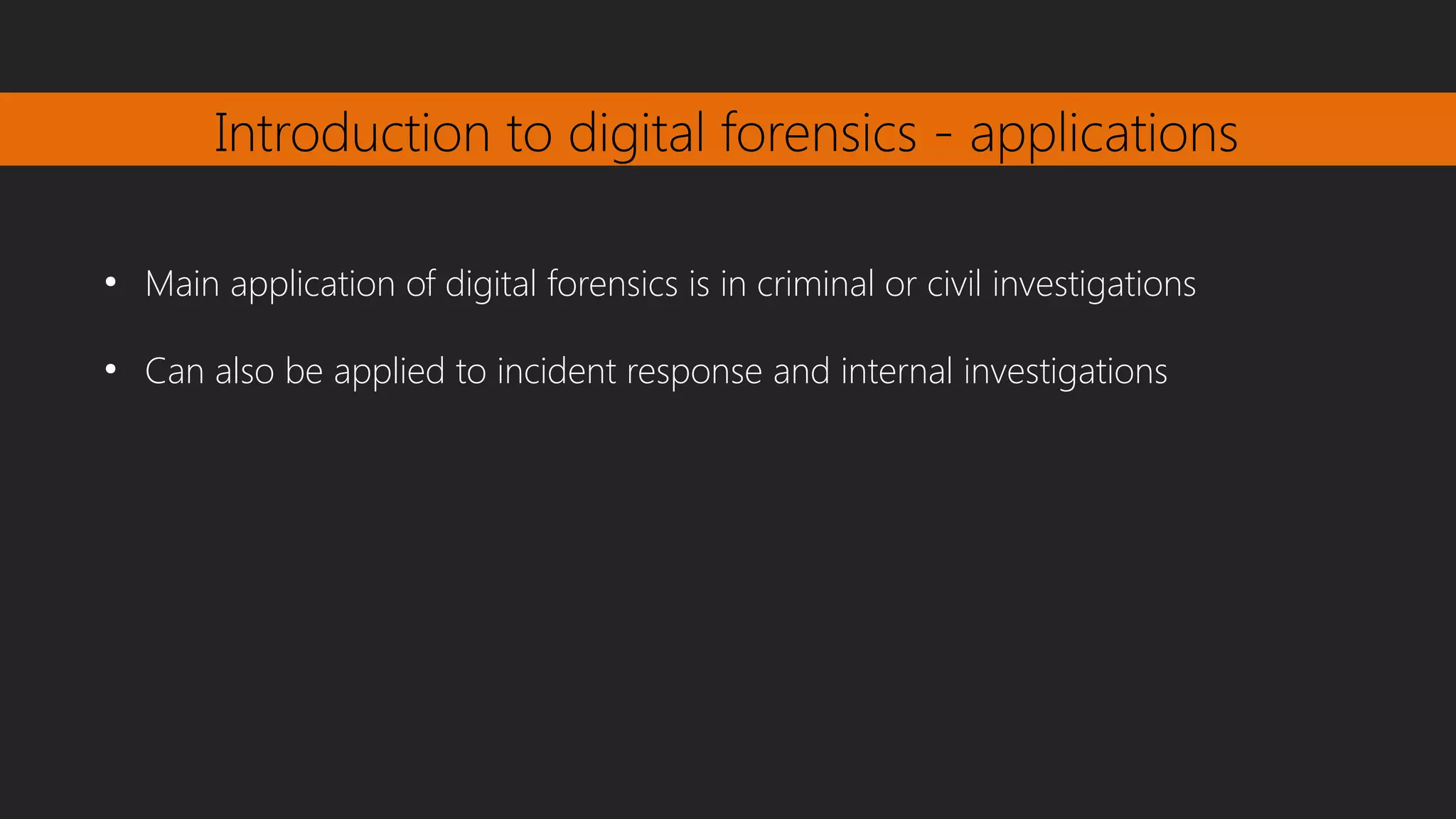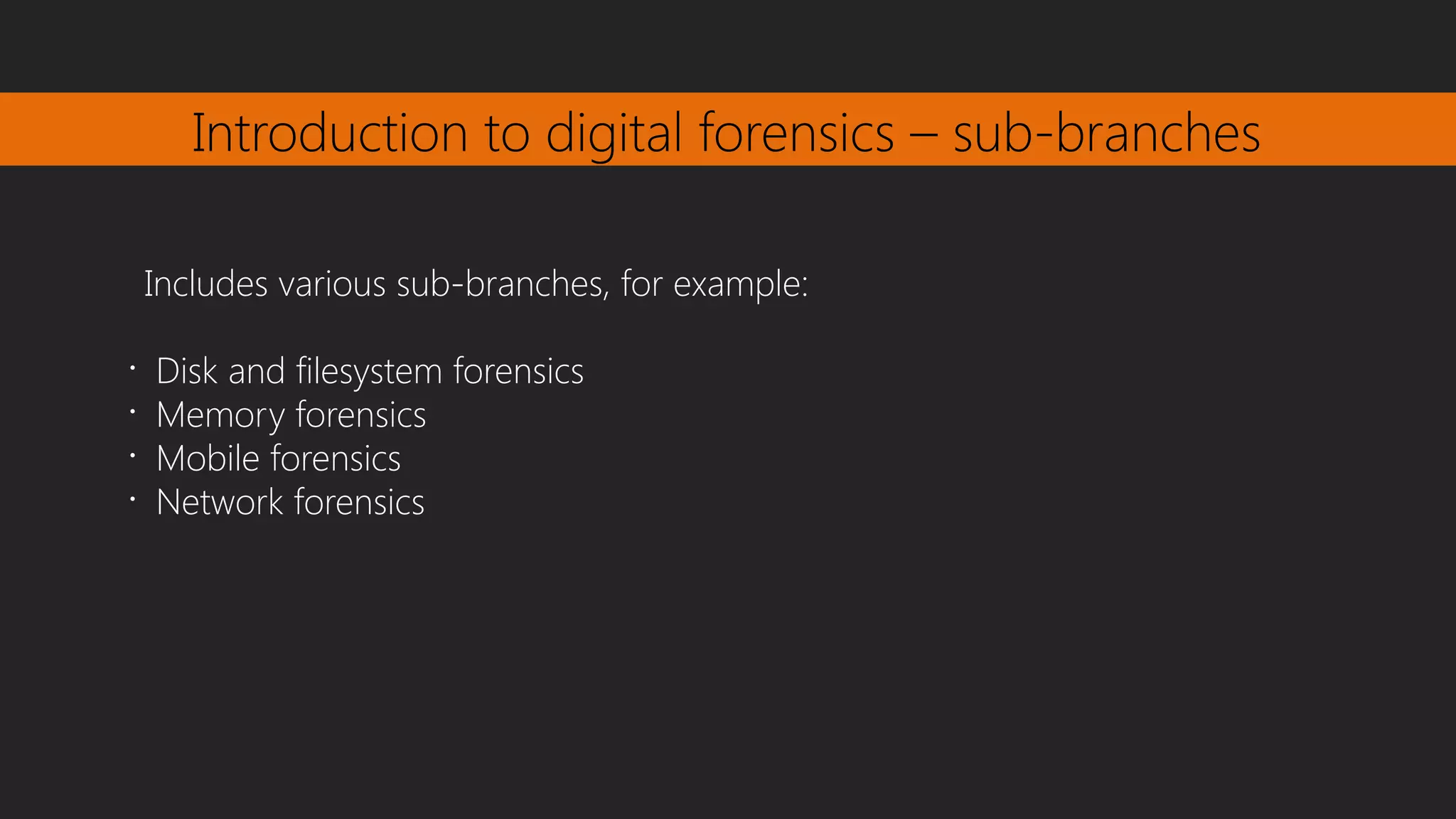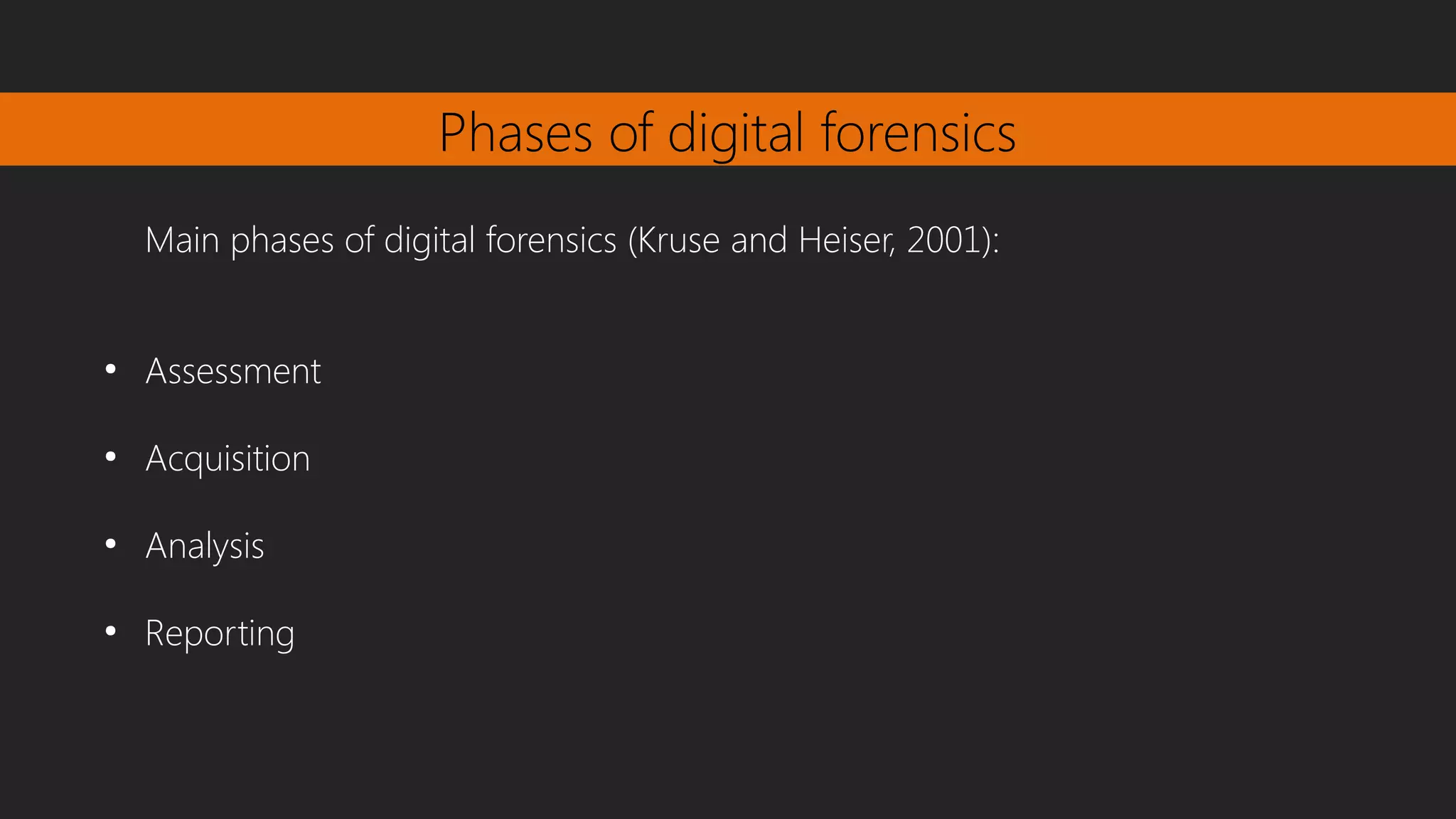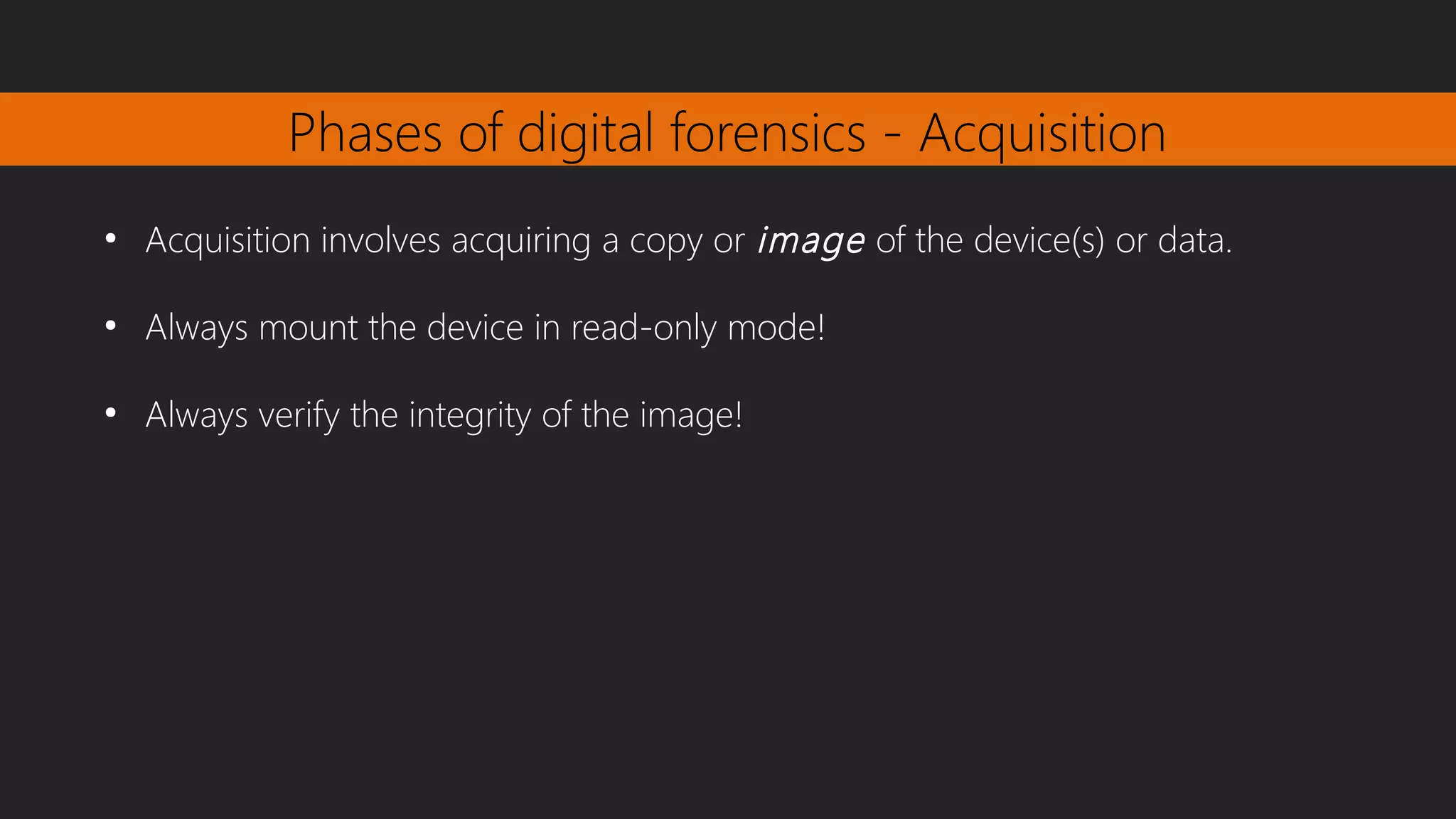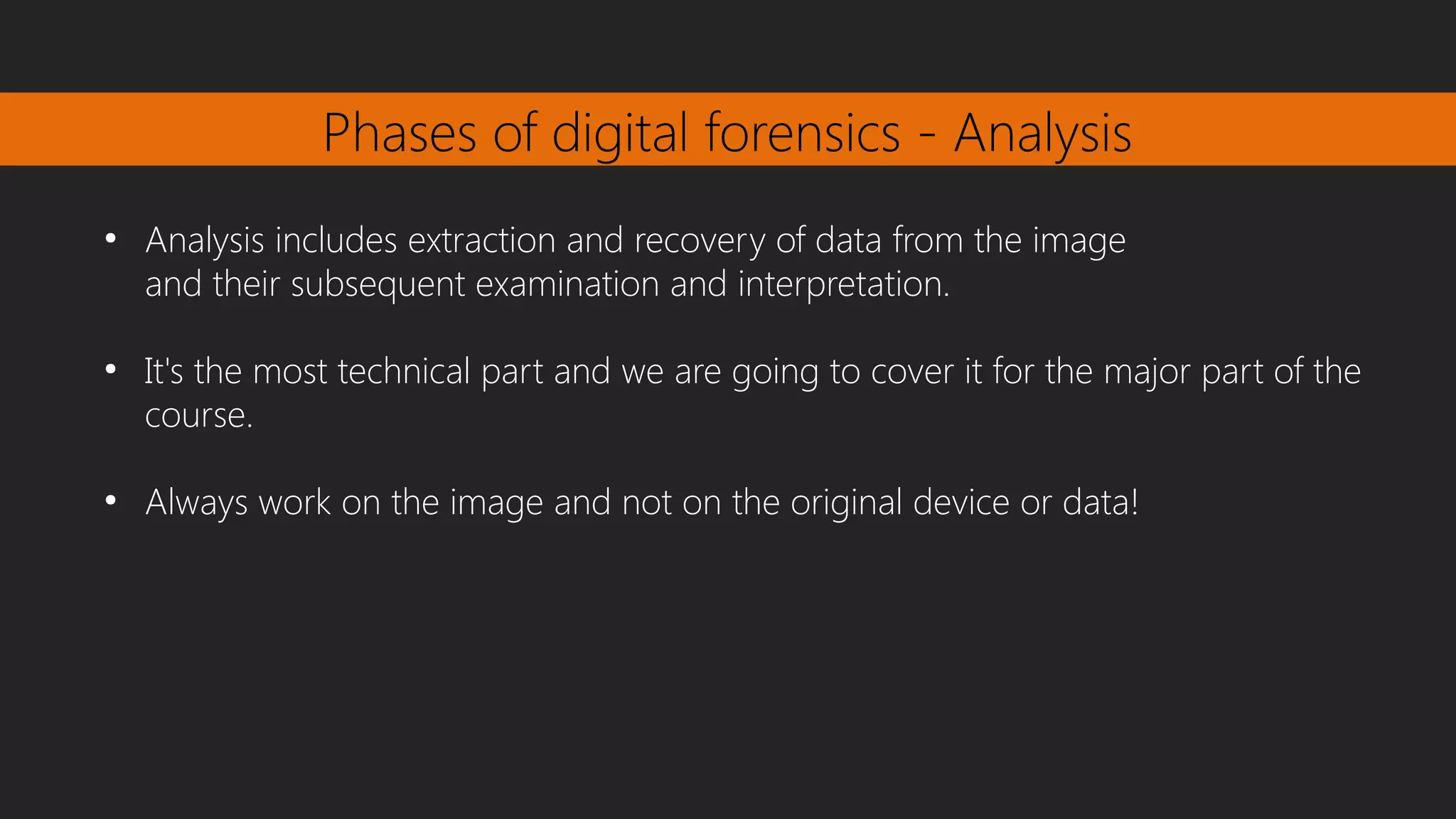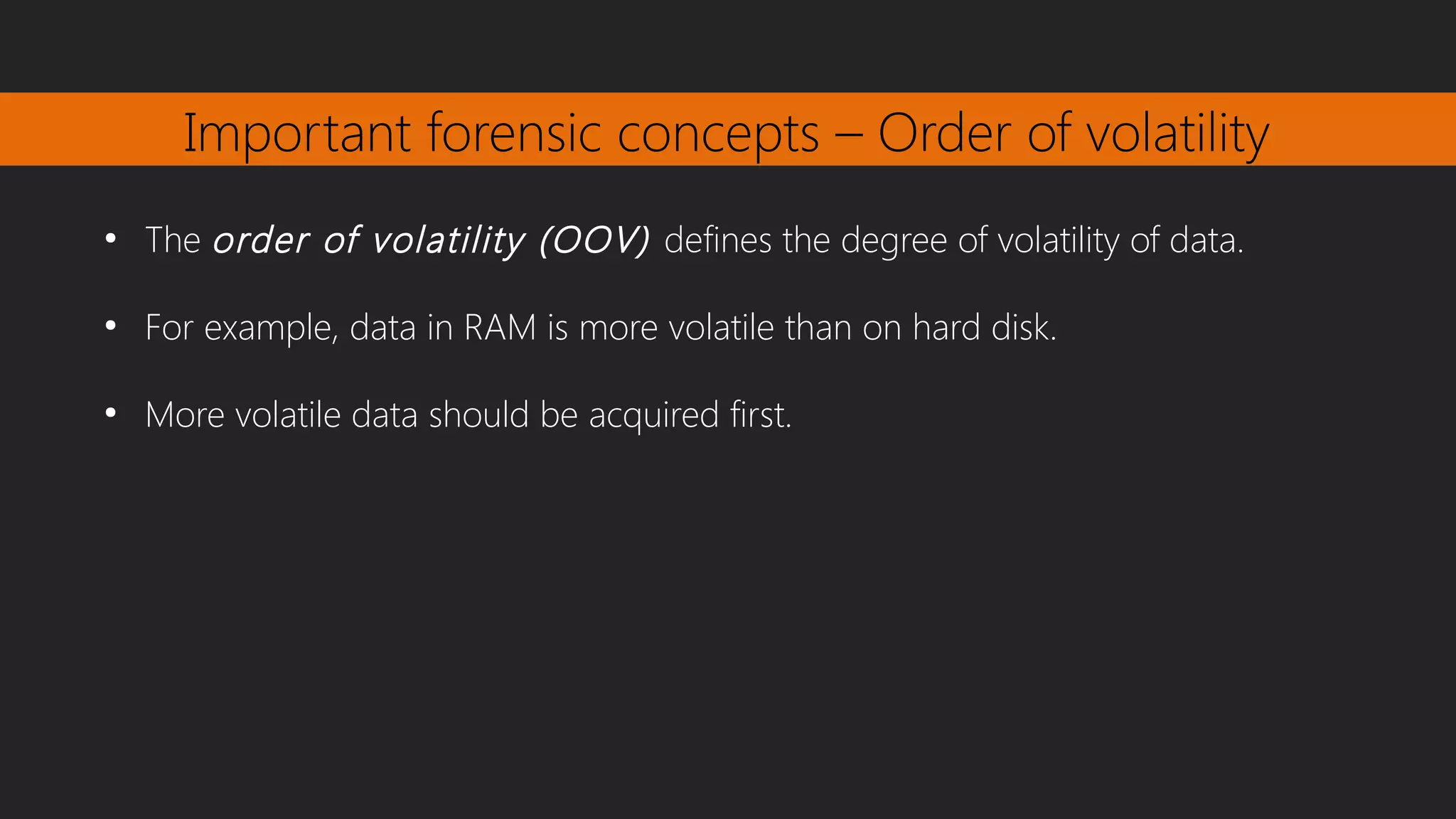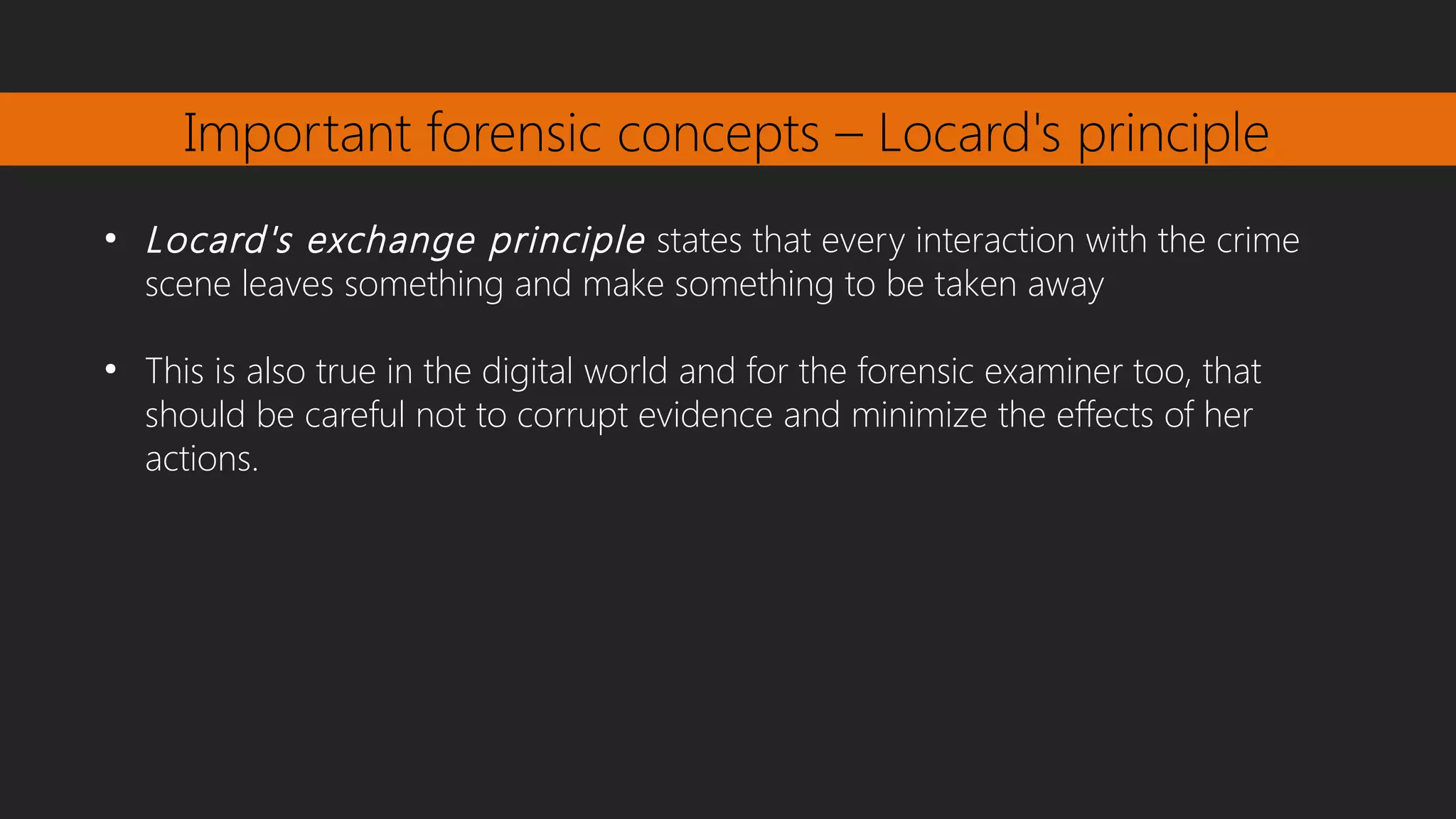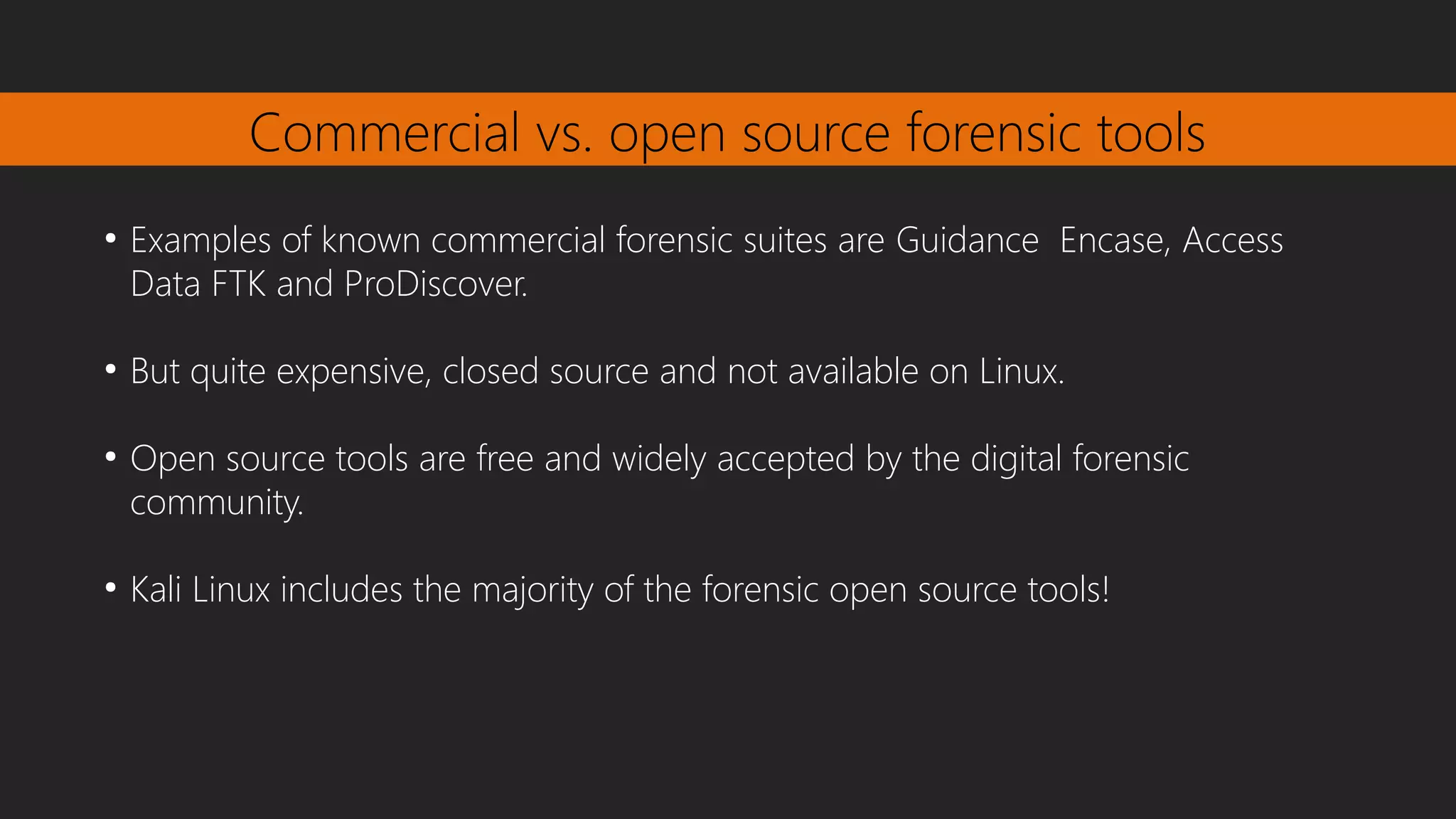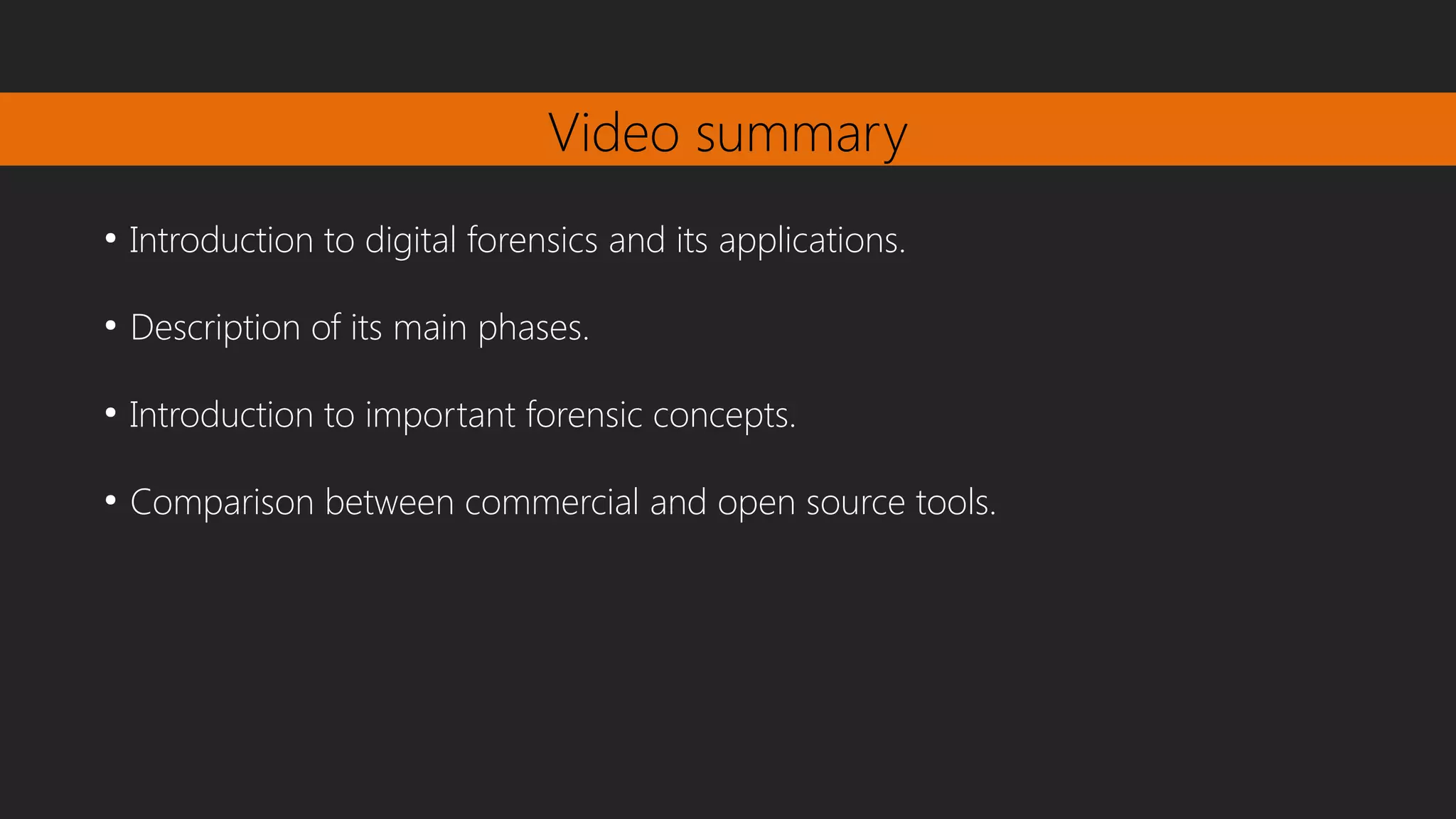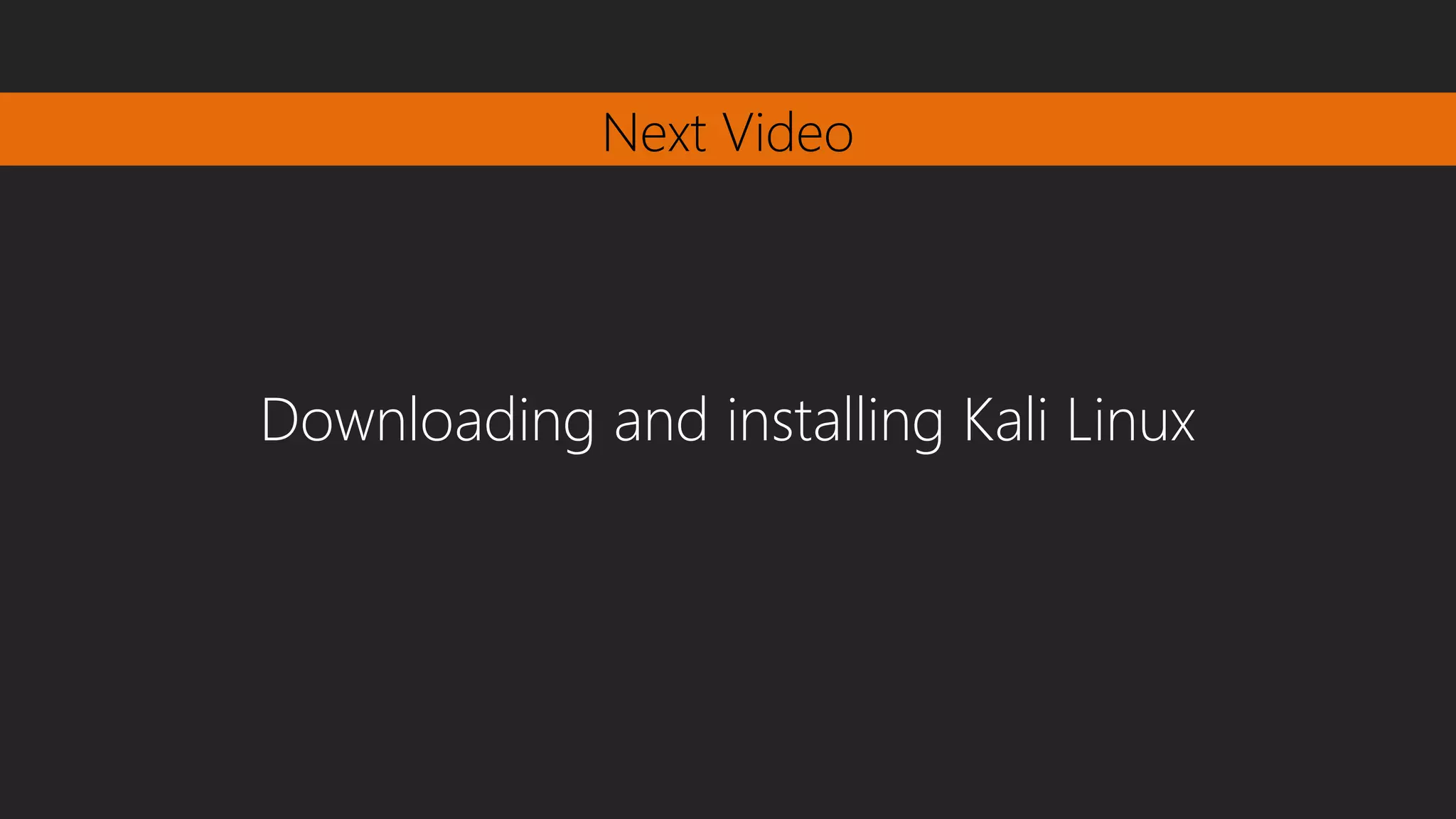The video provides an introduction to digital forensics, outlining its definition, applications in criminal and civil investigations, and various sub-branches such as disk and memory forensics. It details the main phases of digital forensics: assessment, acquisition, analysis, and reporting, along with important concepts like the order of volatility and chain of custody. Additionally, the document compares commercial forensic tools with open-source alternatives, highlighting the advantages of using Kali Linux for forensic tasks.
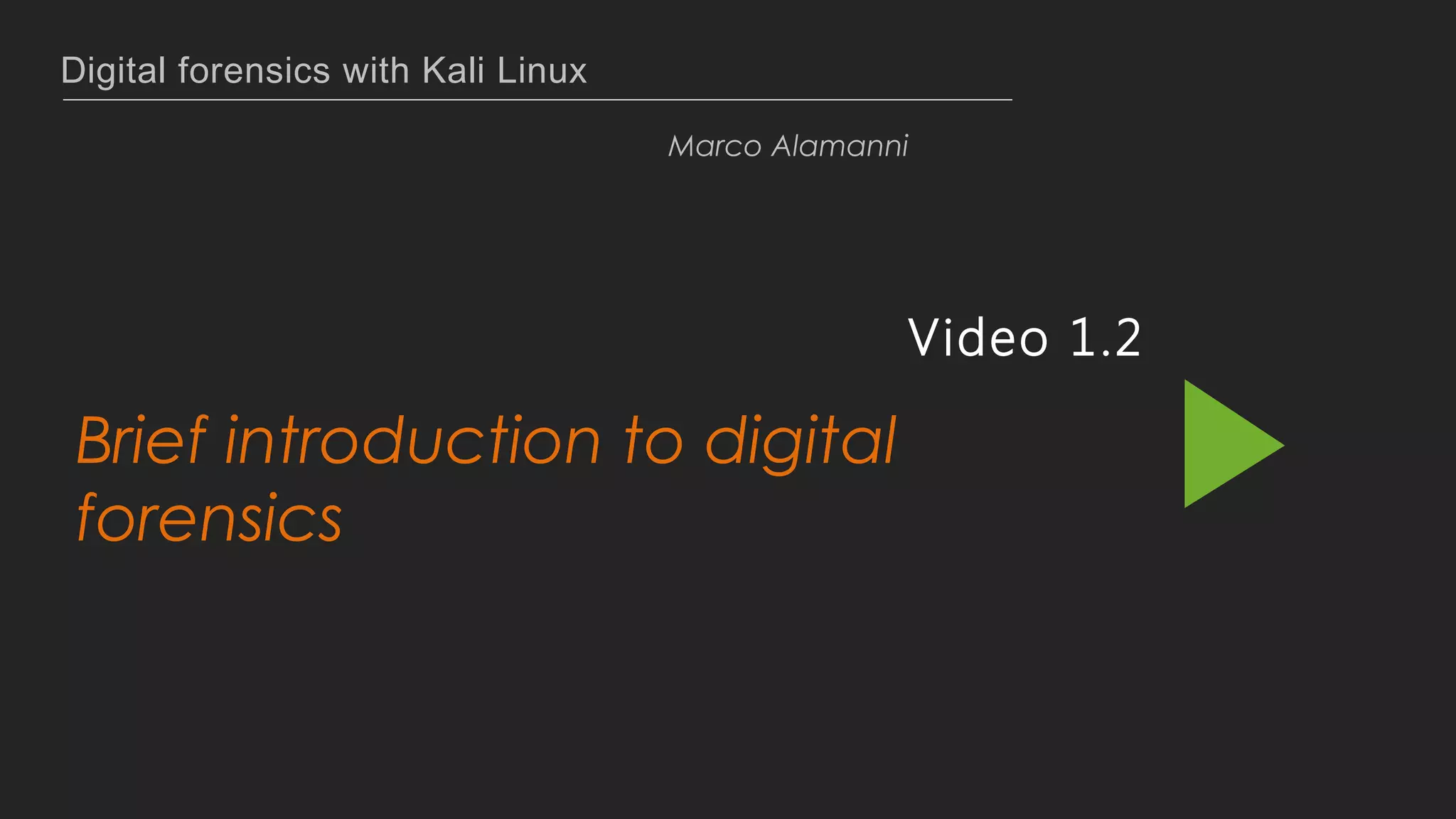
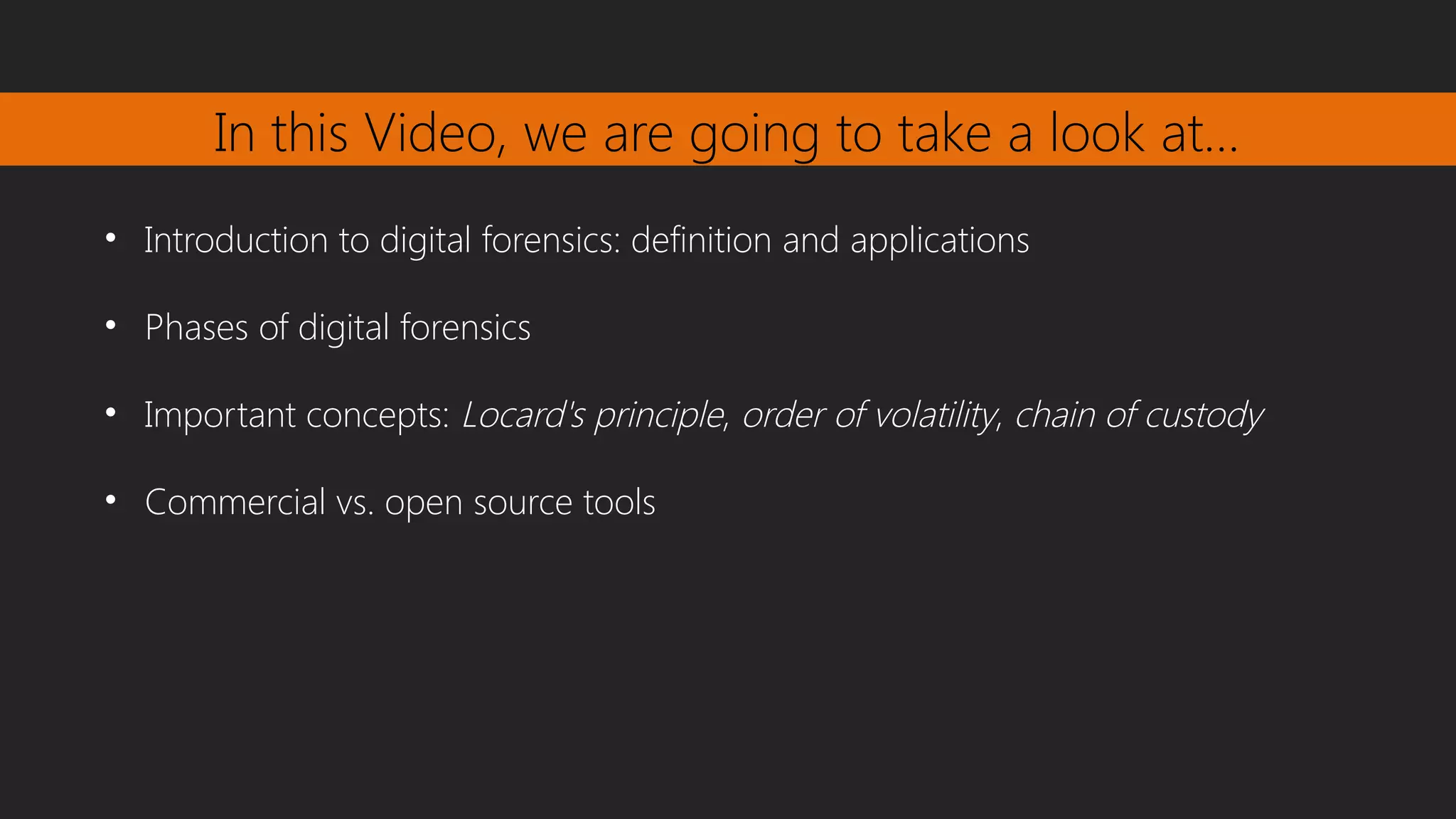
![Introduction to digital forensics - definition
Digital forensics can be defined as “The use of scientifically derived and
proven methods toward the preservation, collection,
validation, identification, analysis, interpretation, documentation and
presentation of digital evidence derived from digital sources for the purpose
of facilitating or furthering the
reconstruction of events [...]”, Digital Forensic Research Workshop
(DFRWS), 2001](https://image.slidesharecdn.com/1-170820211813/75/Brief-introduction-to-digital-forensics-3-2048.jpg)
